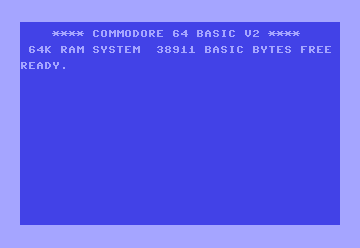
INPUT: Your User Interaction Maestro
Want to make your Commodore 64 programs talk to the user? Look no further than the INPUT command! This essential tool lets your programs ask for information, wait for the user to type it in, and then store that data in variables. It's like having a conversation with your computer, making your programs interactive and engaging!
Syntax
INPUT ["<prompt>";] <variable list>
Where:
- <prompt>: (Optional) A text string that you want to display to prompt the user for input. It can include instructions or questions.
- <variable list>: A comma-separated list of variables where the user's input will be stored. You can use both numeric and string variables.
Applications
The INPUT command is your gateway to:
- Getting user data: Ask for names, scores, choices, or any other information you need from the user.
- Creating interactive menus: Let the user choose options by entering numbers or letters.
- Building text-based games: Get commands from the player to control the game's actions.
- Customizing program behavior: Allow the user to adjust settings or provide input that affects how the program runs.
Code Examples
1. Simple Number Input:
10 INPUT "Enter a number: "; N
20 PRINT "You entered: "; N
This asks the user to enter a number, stores it in the variable N, and then prints it back to the screen.
2. String Input with Prompt:
10 INPUT "What's your name"; N$
20 PRINT "Hello, "; N$; "!"
This example gets the user's name and then greets them personally.
3. Multiple Inputs:
10 INPUT "Enter your age and favorite color: "; A, C$
20 PRINT "You are "; A; " years old and your favorite color is "; C$
This demonstrates how to get multiple values in a single INPUT statement.
INPUT in the Wild: The Interactive Storyteller
Imagine you're creating a text-based adventure game. The INPUT command would be your key to engaging the player, allowing them to make choices that shape the story's direction and outcome.
Don't let your programs be silent! With INPUT, you can open up a dialogue with your users, making your programs more interactive, personalized, and enjoyable. It's like giving your Commodore 64 a voice, allowing it to communicate and respond to the people using it. So embrace the power of INPUT and let your programs come alive!
